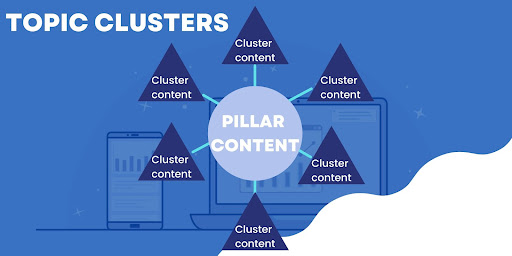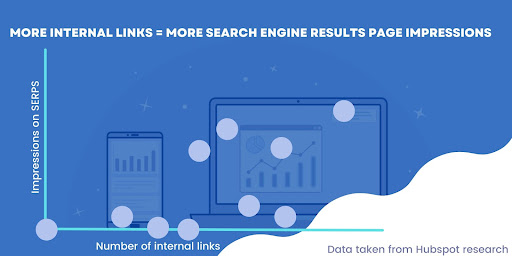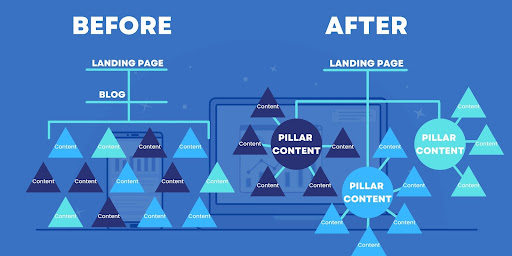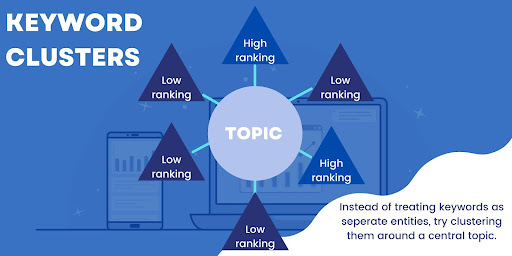There’s no such thing as a one-time fix when it comes to getting your brand discovered via search engines. It’s a constantly evolving practice, with SEO experts racing to keep up with the changes put in place by the search engines themselves.
Just as artificial intelligence in call centers has changed the game for customer service, smart algorithms continue to alter the way we do SEO.
The latest of these shifts is the adoption of a topic cluster model.This is where a single page becomes the central hub for an overarching topic, with multiple related pages linking back to it.
This linking and re-linking acts as a signal to search engine algorithms that the pillar page is a key authority on the topic. This allows the page to rank higher for those keywords while also organizing a site’s content for a more streamlined user experience.
Read on to discover how SEO topic clusters can be as good at driving results for your brand as quoting system software is for generating quotes for your sales reps .
What Are Topic Clusters?
In brief, a topic cluster is a group of content assets centered around a single topic. Each asset may explore a different aspect of the subject at hand, adding nuance and specificity back to the central “pillar” page that links the assets together.
If your topic is machine learning engineering, your topic cluster will be centered on that with contents on other details like machine learning operations or ml tools.
These pillar pages give a broader overview of the subject, with links to pages detailing certain aspects in greater detail. They target general industry keywords with a higher search volume but benefit from backlinks from cluster pages with more specific and less competitive keywords.
The cmbined effect not only improves SEO rankings but drives quality leads with relevant needs to your site.

Image created by author
How SEO Topic Clusters Drive Growth
1. They Adapt Alongside Search Engines
While historically searches used fragmented phrases, such as “Italian restaurant Houston”, to find the pages they were looking for, they have become increasingly conversational over time. The popularity of voice transcription and voice search has advanced this, making users more likely to ask, “What are the best Italian restaurants in Houston?”
Search engine trends have adapted to this, relying less on individual keywords and more on the intent behind and connections between queries.
Google is still dropping SEO advances, such as a recent algorithmic breakthrough that determines the relevance and importance of particular phrases within a page. The search giant has also been adopting neural net technology to understand subtopics relevant to a broader interest.
With so much top-level investment in topic-based search, brands need to reorganize their content in line with the direction Google is moving in or risk being left behind.
2. They Improve Keyword Research
Having the right contact centre cloud solutions to communicate with customers affect a brand’s reputation. In the same way, mistakes in keyword research add up to significant penalties.
SEO experts are well-versed in targeting competitive keywords with high search volume. However, this approach often misses crucial information about how the keywords relate to one another and guide customers to conversion.
Some SEO teams try to play the system by prioritizing multiple keywords with lower search volume, increasing rankings incrementally. However, these pages risk cannibalizing one another through excessive overlap and repetitive content.
A topic cluster approach unifies higher and lower volume keywords, creating content that resonates better with potential customers while ranking for semantic value. Rather than a linear list of terms to squeeze into a piece of content, you can work with your content team to build quality writing around a keyword-guided structure.

Image created by author – Data source
3. They Help Google Understand Your Site
A total redesign can help your website do more than just look good. A well-structured site provides a map and compass for search engine algorithms, helping them gain a semantic understanding of your content hierarchy and how pages interrelate.
The more cluster pages that link back to a pillar page, the more Google’s algorithm will interpret that pillar page as a central topical authority. That makes the pillar page more likely to rank well, rather than competing with its cluster content.
Your brand is likely to target multiple audiences, each of which will be drawn to different subjects and areas of expertise. Instead of trying to create content that reaches all of these equally via SEO, why not create distinct clusters? Topic clustering can help Google see the intent behind each piece of content and make sure it reaches the right audience.
4. They Enhance Contextual Authority
Context is crucial to understanding what a site can provide. For example, a blog post about jaguars could be relevant to animal lovers, sports fans, or car buffs. However, if it links back to a pillar page about classic car restoration, it’s unlikely to appear in football lovers’ search results.
Google’s algorithm learns context from on-page elements, such as URL, headings, subheadings, calls to action, and in-text keywords. Recent updates go further. By linking your content back to broader subject-relevant pages, Google can now gain insight into why you created it and who you want to see it.
These linked clusters can give the algorithm information about your site’s breadth of knowledge. If your site structure shows ten or more interlinked, related, yet non-repetitive pages, this will be viewed as complete coverage of a topic. This will improve rankings and give users peace of mind that they’ve come to the right place.
5. They Restructure Smartly
When looking at your site’s content map, chances are it involves a lot of dead-end pages, such as blog posts within subdomains and subdirectories with no clear link back to core content. Imagine a single blog about a bookkeeper contract on your site without any clear connection to other contents. This creates a sprawling site structure with no uniform link to keep content circulating.
This sort of disorganization can cause problems internally, especially with the rise of remote collaboration where your content team needs to access relevant pieces quickly from their own devices.
If this lack of structure is difficult for you to navigate, imagine how hard it is for search engines to crawl through. With potentially dozens of unlinked pages containing similar information, your website ends up competing with itself rather than unifying to rise through the rankings.
SEO topic clusters give users and search engines alike clear signals as to which pages should be prioritized, and which similar pages are best at answering specific questions. By linking back to a central pillar page, you can demonstrate the semantic relationship between content assets and rank them by breadth and depth.

Image created by author
6. They Enhance UX
At its heart, SEO is about UX. Keywords and rankings are all centered around helping real people find the answers they need faster. Understanding SEO means understanding why and how your audience searches, including particular pain points and intentions.
By restructuring your content around SEO topic clusters, you can draw out new facets of your target audience and predictively build content around a core topic that answers multiple questions in one go.
Now, users can be directed to a central hub containing links to content specific to their needs. You can even begin to anticipate follow-up questions and ensure the right content is provided at the right moment in the user journey.
Let’s say you’ve recently created a blog discussing business communications. A well-placed link to your hosted ip services will lead readers to a page where they can check out your services and find answers to questions that they may initially have.
This keeps users engaging with your site directly rather than increasing the bounce rate that Google Analytics logs and penalizes.
8. They Give New Sites a Boost
Newer websites suffer from a low domain authority, meaning that even the highest-quality content doesn’t stand a chance at ranking for more competitive keyword phrases.
Topic clusters allow this content to shine, helping it rank consistently for less-competitive keywords and beginning to drive quality traffic. This, in turn, leads to increased site authority and paves the way toward more competitive keywords.
A topic cluster strategy for new sites has three main phases. Firstly, you need to gain search traffic for long-tail, low-volume keywords through well-structured content clusters. This leads to the elevation of the main pillar content in rankings for more competitive keywords. Finally, you can begin to build credibility in the pillar content subject, ranking as an industry expert.
How to Create a Topic Cluster

Image created by author
It’s easy to see the short-term benefits and long-term benefits of restructuring your site with topic clusters. However, when looking at your current unstructured content, it can seem a daunting task.
This calls for some background work. You can hop on a group discussion on your teams phone system, and complete a full-scale audit of your existing content and group them all by topic focus. Consider pruning or amalgamating repetitive content to avoid keyword cannibalization and duplicate content penalty.
You can then go through each group and create a pillar page that captures the key aspects of the topic. This can take the form of an introduction and list of helpful links or an article in its own right with the cluster pages linked in-text.
Re-examine each piece of cluster content in light of the new topic focus, optimizing it to go in-depth into a single area mentioned on the pillar page.
Finally, update the links in your related content pages so they all refer back to the pillar page. Each post in the cluster needs at least one pillar page link with the same anchor text. This signals to search engines that it’s part of the same cluster.
Conclusion
Topic clustering reframes SEO and content marketing with user experience at the center. Over time, your clusters will form the basis of an easy-to-access and authoritative library of content, which can be read and ranked for context and semantics as well as keyword optimization.
These tactics come together to not only showcase but also enhance the expertise of your content. With well-structured clusters, you can ensure your quality content reaches the right audience and guides them toward conversion.


